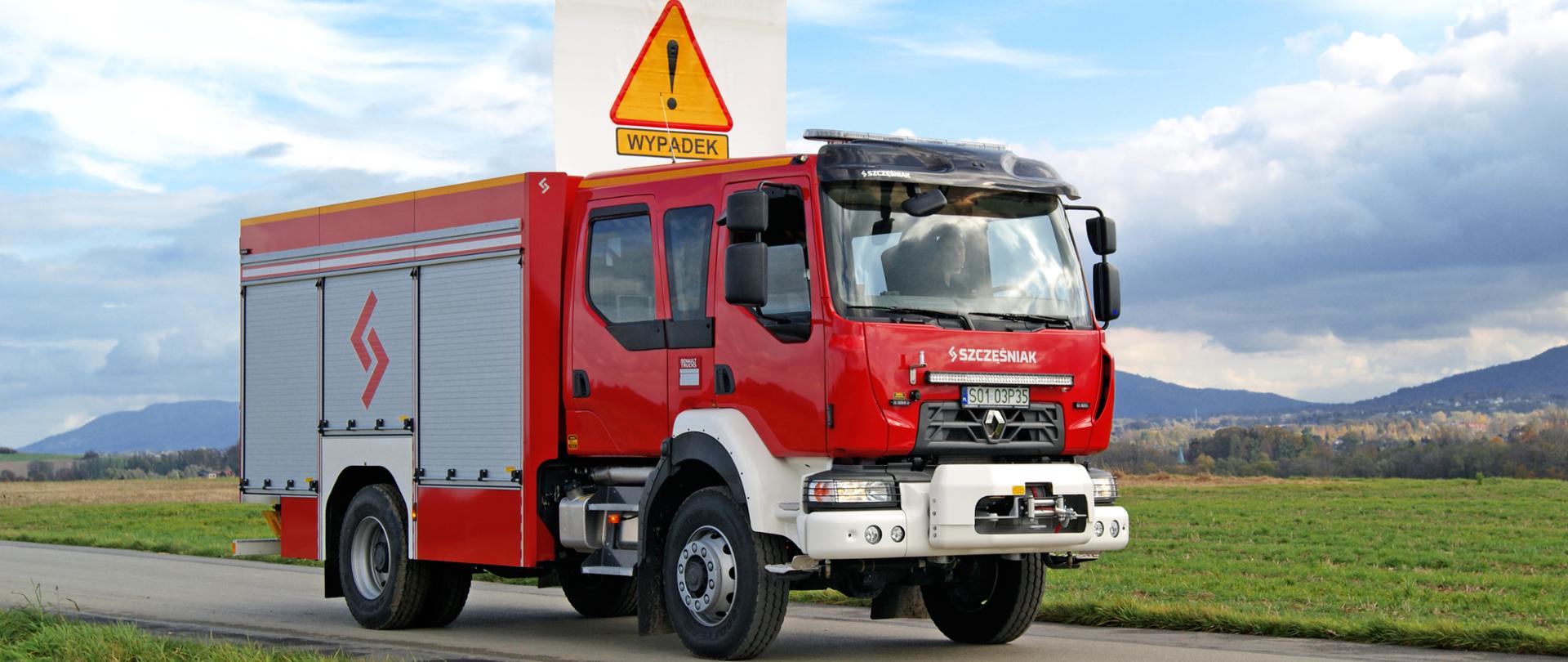Optimisation of equipment deployment on fire fighting vehicles to reduce vehicle height

 Project title
Project title
Optimisation of equipment deployment on fire fighting vehicles to reduce vehicle height
 Name of Beneficiary/Beneficiaries
Name of Beneficiary/Beneficiaries
Consortium: Wojskowa Akademia Techniczna im. Jarosława Dąbrowskiego (Military University of Technology), SZCZĘŚNIAK Pojazdy Specjalne Sp. z o. o., Wojskowy Instytut Techniki Pancernej i Samochodowej (Military Institute of Armour and Car Technology)
 Name of programme
Name of programme
Project implemented for the benefit of national defence and security
 Competition
Competition
9/2018
 Project value
Project value
PLN 4 102 253.00
 Funding value
Funding value
PLN 3 335 165.00
 Project delivery period
Project delivery period
from 12/06/2019 until 11/03/2022
Have a look at the outcome of our work
What problem does our project solve?
In the recent years, there has been a continuous process of improvement in the requirements for equipment used in fire protection units, both in terms of safety of use and operational effectiveness. Such equipment is fire-fighting vehicles, which, thanks to the development of technology, make it possible to reduce the risks associated with their use. Existing guidelines and requirements take into account the normative and technical aspects of vehicles and their equipment, but not sufficiently the ergonomics of their use.
As a part of the implementation of the project, various options for the deployment of special equipment in a 4x4 medium-sized rescue and fire-fighting vehicle intended for deployment in first response operations were analysed. However, given the requirements currently in force, simply changing the arrangement of the equipment is not sufficient to reduce the height of the vehicle. The changes must concern the design of the vehicle itself, i.e. elements such as the auxiliary frame, the shape of the tank, etc., which has been taken into account in the production process of the prototype. - which was taken into account in the prototype production process.
The implementation of the project resulted in the creation of a prototype of a medium-sized rescue and fire-fighting vehicle dispatched to action first, with equipment in accordance with the 'Guidelines for standardisation of equipment for fire-fighting vehicles and other means of transport of the State Fire Service'. A modern fire-fighting vehicle was created, providing greater ergonomics of use than other vehicles of this class, commonly available on the market. The innovation of the results obtained consisted in optimising the arrangement of equipment in the vehicle bodywork to the extent of lowering the vehicle height. Thus, the ergonomics of the use of the vehicle during the collection of equipment from the body lockers by the rescuer was improved. In addition, the construction of the demonstrator was designed so that the vehicle has a lowered centre of gravity, which improves the movement dynamics of the vehicle by increasing its stability and handling when cornering at high speeds.
Who will benefit from the outcomes of the project?
The results of the project implementation will benefit users of fire-fighting vehicles and manufacturers of fire-fighting vehicles. As a result of the project, a prototype vehicle was constructed, which represents the embodiment of the guidelines formulated on the basis of a detailed literature analysis and the actual state of affairs with regard to medium-sized fire-fighting vehicles and their special equipment, dispatched for initial action. The vehicle, and in particular its bodywork, was constructed in such a way as to enable optimum, from the point of view of ergonomics of use, arrangement of special equipment in the vehicle bodywork and ensuring high comfort and safety of use for the rescuer.


